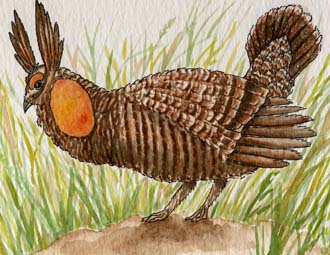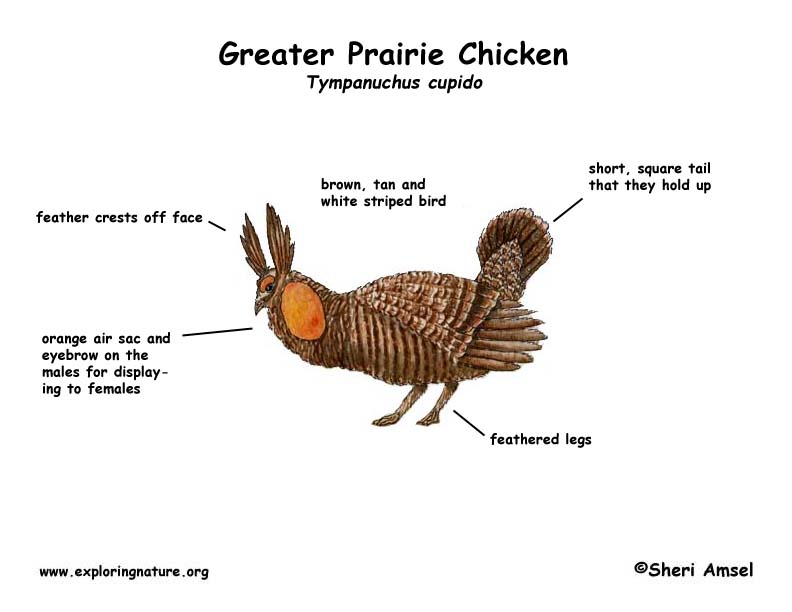

They once lived all over the U.S. and Canada in open prairie and mixed oak forests. Now they can only be found in some open grasslands ranges in 10 prairie states. Most of their habitat has been plowed under for farms or over grazed by cows.
Prairie chickens need open, tall grass prairie and shrubby, grassy areas along the edge of forests. The tall grass protects them from strong winds and heavy rain.
They are big birds — up to 18 inches long. They have brown and tan stripes on white (called barring). Their tail is short and square. It is dark brown on the males and barred on the females. They have feathers on their legs. The males have orange air sacs and eyebrows in the spring that they use to display to females.
In the spring, males stand on a small rise and display to attract a mate. They puff up their orange cheek patch and stamp their feet and dance. This is called "booming." They feed early in the morning and late in the afternoon, resting during the heat of the day.
They eat plants and insects and grain left over in farm fields. Chicks eat a lot of insects.
From early spring though June, the males dance, call and fight with other males. The small rises where they display are called "booming grounds" or "leks." Females visit them in their territories to mate. Their nests are simple, saucer-shaped piles of dead grass. They lay a dozen grayish-green eggs with tiny spots and sit on them for 3 weeks (incubation).
When you research information you must cite the reference. Citing for websites is different from citing from books, magazines and periodicals. The style of citing shown here is from the MLA Style Citations (Modern Language Association).
When citing a WEBSITE the general format is as follows.
Author Last Name, First Name(s). "Title: Subtitle of Part of Web Page, if appropriate." Title: Subtitle: Section of Page if appropriate. Sponsoring/Publishing Agency, If Given. Additional significant descriptive information. Date of Electronic Publication or other Date, such as Last Updated. Day Month Year of access < URL >.
Amsel, Sheri. "Prairie Chicken (Greater)" Exploring Nature Educational Resource ©2005-2024. December 16, 2024
< http://www.exploringnature.org/db/view/Prairie-Chicken-Greater/ >

